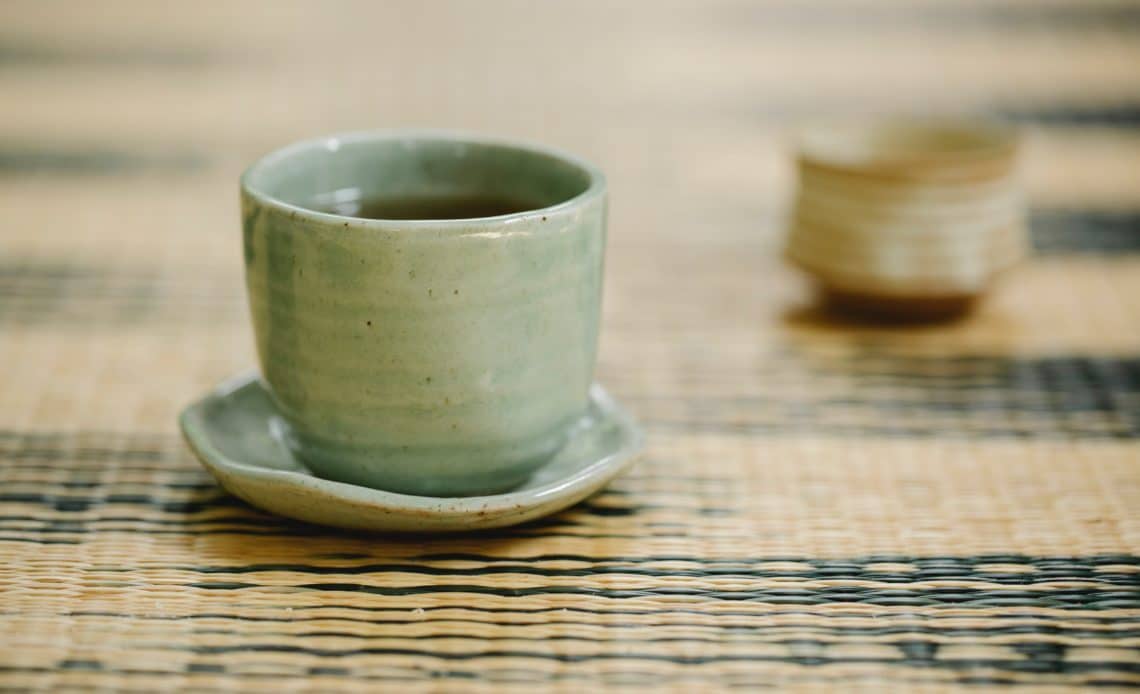
Kava – or more properly kava kava (the herb so nice they named it twice!) – is an herb native to the Polynesian islands. Its roots have traditionally been ground and strained to create a beverage that, in many Pacific island cultures, fills a social role similar to alcohol in most other parts of the world.
Due to kava’s anxiolytic, euphoric, and sedative effects, it has recently become popular in the United States and other Western countries as an herbal “relaxation” supplement. It’s also become a major alternative to alcohol, with kava bars beginning to crop up in most major American cities.
Studies show that kava is indeed useful for helping you to relax, have fun, and even sleep. However, it also has its side effects and some addictive potential so you need to know how kava works and how to properly dose it– but if you do, it’s a useful addition to your “supplement toolbox”.
Looking to buy kava? Check out our article on the best kava.
Kava Studies
Kava For Anxiety
Over half a dozen studies have shown kava to be highly effective in treating acute, non-psychotic anxiety. While the effects of kava are mostly acute, and studies are mostly of short duration, one 25-week study did note that kava has “proven long-term efficacy” in treating anxiety disorders.
Most studies follow this same basic design, just with shorter durations– but one study took things in a different direction. In a novel five-week experiment, patients were initially given benzodiazepines for non-psychotic nervous anxiety. They then tapered off the benzos while simultaneously tapering up kava for 2 weeks, followed by 3 weeks of taking only kava. This study found that kava was both superior to placebo and a safe and effective substitute for benzodiazepines.
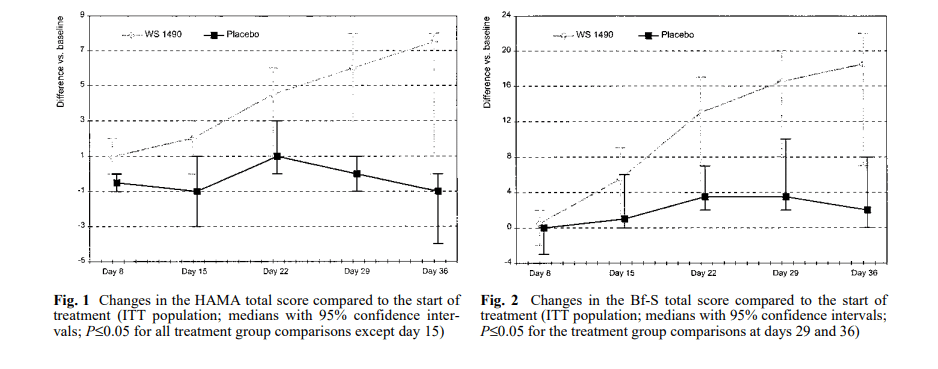
Because kava takes effect quickly and lasts for only a few hours, it’s usually thought of as an acute treatment. However, a lower dose of kava three times a day seems to also be an effective long-term treatment for chronic anxiety.
Kava For Depression
Given the close link between depression and anxiety, it should be no surprise that kava is effective in reducing depression symptoms as well.
First off, the same 25-week study which found kava to be an effective substitute for benzodiazepines also found a significant reduction in depression symptoms.
A different study found that kava is effective for depression, and that kava is also equally effective in treating anxiety whether or not the anxiety is accompanied by depression. Although only 3 weeks long, the experimental setup was made more robust by using a crossover design.
There are fewer studies overall on kava’s effects in treating depression, compared to anxiety. As well, the overall effect on depression seems to be milder than for anxiety. Kava may only be effective for depression that is also accompanied by anxiety– further studies would be helpful here.
Kava For Sleep
The same properties that make kava an effective anxiolytic also make it effective as a sleep aid, both in speeding sleep onset and facilitating deeper sleep.
One experiment with 61 patients confirmed the effectiveness of kava for anxiety-induced sleep disorders. Statistically significant improvements were seen in the measures of “quality of sleep” and “recuperative effects after sleep,” as well as for anxiety.
A differently designed study pitted kava against valerian extract and found both to be similarly effective– and safe– in combating stress and stress-induced insomnia.
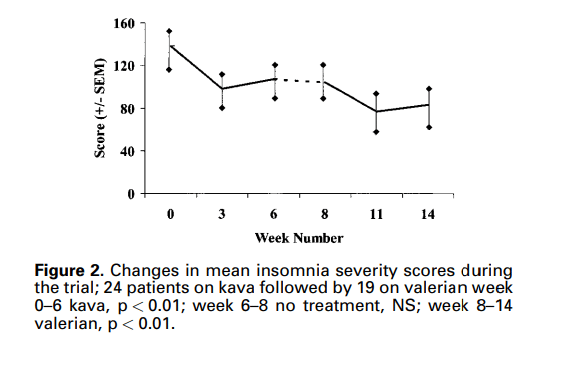
Few controlled studies so far have tested kava’s sleep-promoting effects, but widespread anecdotal evidence also supports kava’s effectiveness as a sleep aid. So far, the evidence mainly supports using kava for anxiety-induced insomnia. Since it’s both a sedative and an anxiolytic, it would likely be somewhat effective, but less so, against other forms of insomnia.
Kava For Pain
Some people use kava as a painkiller, but the scientific community has barely started to investigate this usage of kava. While we can say that it is effective, so far scientists haven’t really figured out how kava acts as an analgesic, nor are its interactions with other drugs fully understood.
We do know that kava’s analgesic effects do not work through the opioid system, which is a good sign vis-a-vis addictiveness.
We also know that four distinct kavalactones in kava exert these analgesic and anesthetic effects. And finally, we know that kava can potentiate other painkillers and sedatives, such as Xanax and barbiturates.
That last part makes kava dangerous to mix with other sedative painkillers. The effective painkilling dose of kava is 50-70 mg of kavalactones, 3 times a day. If that isn’t enough, you can combine it with low-dose NSAIDs like Advil, but that’s it– kava is not safe to combine with anything stronger like opioids, barbiturates, or prescription anxiolytics.
Kava For Alcohol Withdrawal
Kava serves a social role similar to alcohol in many Polynesian cultures, and because the effects are somewhat similar to alcohol, there is reason to believe that kava may have some usefulness in reducing the effectiveness of alcohol withdrawal.
So far, this comes almost entirely from anecdotal evidence, however. Kava does not (mostly) work via the same pathways as alcohol, which makes it safer. However, it’s not a perfect substitute.
A few individuals credit kava with helping them overcome alcoholism, and a few addiction treatment centers have started experimenting with kava to help wean people off alcohol. That said, kava cannot prevent delirium tremens in severe alcoholism, and alcoholics absolutely need to be under medical attention when they initially quit drinking.
As for scientific studies of kava as an anti-addictive agent, we only have one really good one so far. It shows that kava may indeed reduce cravings for addictive drugs, including alcohol. That said, a lot more research is needed, and we cannot recommend kava as a stand-alone treatment for alcoholism right now, and certainly not as a self-treatment.
However, if an addiction treatment center chooses to use it as part of a broader, medically-supervised approach, there is reason to believe that it may be helpful.
Kava Side Effects
While safer than alcohol, kava does have a few side effects. Some are about what you’d expect from a sedative that seems kind of similar to alcohol, but others may surprise you.
Kava Headache
Although it can sometimes relieve headaches, kava can also cause headaches and this is more common in habitual than in first-time kava drinkers. This happens for a few different reasons.
The first is simple – dehydration. Kava is a diuretic, so you need to remember to drink water in between cups of kava. You’ll get more dehydrated in hot weather, or if you mix kava with other diuretics, such as alcohol or caffeine. Kava tolerance doesn’t reduce kava’s diuretic effect– only its sedative/anxiolytic effects– hence why frequent users are more prone to headaches.
A second factor is the type of kava used. Tudei kava is more prone to causing headaches than noble kava because it has higher levels of DHK and DHM– two kavalactones that cause headaches.
It’s also likely that incompletely removed solvent chemicals may contribute to kava headaches – see the next section about that.
As long as you stay hydrated, stick to noble kava made by reliable companies, and don’t consume kava habitually (more than 3-4 days a week). You should be able to avoid kava headaches by taking these steps.
Kava Liver Damage
Like alcohol, kava can cause liver damage when used habitually. Scientists have long debated whether this liver damage is caused by kava itself, or by the solvents used to extract kava. While those solvents should be removed from the end product, some bad batches of kava still have a significant amount of extracting solvents in them.
It turns out it’s both – kava itself is mildly hepatoxic, but low-quality manufacturing processes can also leave hepatoxic solvents in the end products. This is the number one reason why it’s so important to find a good source – not just so that the kava is of high quality, but to make sure you’re getting only kava and not any of the other chemicals used to extract it.
As far as kava’s hepatoxicity, it’s milder than alcohol. Traditionally-prepared kava isn’t extracted at all, so there are no solvents to worry about, and in a culture where kava is consumed in the traditional manner, liver damage is only seen in heavy, long-term users.
That said, enough kava over a long enough time can damage the liver, albeit not in quite the same way as alcohol. For this reason, kava must be consumed in moderation, and not every day.
Kava Rash
In long-time habitual kava drinkers, kava has been known to cause a scaly rash to develop on parts of the skin. This only happens over the long term and it is not an acute reaction. So far, it has almost exclusively been seen in individuals in traditional kava-consuming cultures, indicating that kava itself, and not the extracts or solvents used in the extraction process, is the cause.
The cause has not entirely been identified. While some researchers had previously theorized that niacin deficiency may be the culprit, the leading theory now is that kava skin rash is secondary to liver damage from kava. The mechanism here, still not entirely elucidated, seems to be impaired cholesterol metabolism due to kava-induced liver damage.
In other words, avoid liver damage from kava and you avoid skin rash. Again, this is just a matter of using kava in moderation.
Kava Drug Interactions
Kava’s potential drug interactions have not been widely studied, but a few interactions are already known. The following is copied from Mental Health America, as it is important enough to warrant copying in its entirety rather than merely summarizing:
“Alcohol, other sedatives, muscle relaxants, dopamine, haloperidol, acetaminophen, and benzodiazepines. Taking kava with alcohol, other sedatives, or muscle relaxants can result in additive effects up to and including coma. Kava may interact with several drugs, including drugs used for Parkinson’s disease and benzodiazepines used for anxiety. Alcohol or acetaminophen (Tylenol), which may injure the liver, should never be used with kava. Kava may interfere with the effects of dopamine and drugs that are similar to dopamine and may worsen the neurological side effects of drugs that block dopamine, such as haloperidol (Haldol).
Psychotropics and anesthesia. Kava may have chemical properties similar to monoamine oxidase inhibitors (MAOIs), and may be additive to the effects of MAOI antidepressants, such as isocarboxazid (Marplan), phenelzine (Nardil), or tranylcypromine (Parnate). Thus, kava should never be used with MAOIs. Adjunctive use with other psychotropic drugs, including tricyclic antidepressants and SSRIs, has not been tested, but should not be attempted without careful coordination with the prescribing physician. Kava may cause excessive drowsiness when taken with SSRI antidepressant drugs such as fluoxitine or sertraline. Kava may also cause anesthesia to last longer and use should be carefully coordinated with the prescribing physician or anesthesiologist.
Anti-cancer and birth control drugs. Kava may also interact with anti-cancer and birth control drugs.“
Of course, many other dugs likely have interactions with kava and merely haven’t been studied. In general, kava just shouldn’t be combined with any kind of prescription sedative or anxiolytic drug, in addition to those listed here.
On the other hand, combining a low dose of kava with a low dose of an herbal or over-the-counter anxiolytic or sleep aid, such as kratom, ashwagandha, valerian, or melatonin, may be more effective than using a higher dose of one or the other. The emphasis here is on low doses though; start low and work your way up to the minimum effective dosage or both supplements.
How To Take Kava
Kava can be prepared and consumed in several different manners. The traditional manner would be to soak whole or, more likely, shredded kava root. The next closest would be to soak ground-up kava root, in a manner not unlike how coffee is made from coffee grounds.
More often though, kava is sold as a powdered extract, sometimes micronized for faster and more complete absorption. In this case, you simply mix the powder with water, coffee, or tea. These extracts allow you to know exactly how much kavalactones– the active ingredients of kava– you’re consuming.
Finally, in some cases, kava extract is sold in pills. This makes it easier to take and to measure the dosage, and it is also greatly preferable if you need to travel with kava. It’s not traditional at all, but it has the same effect as consuming powdered extract.
If you’re interested in making kava the traditional way, or simply want to mix it in a way that (after you’ve gotten used to it at least) tastes good, read our guide on kava preparation.
Kava Dosage
A typical starting dosage of kava is 150-250 mg of kavalactones per day. For anxiety, this is typically split into 3-4 doses throughout the day, while for sleep it tends to be taken all at once before bed. If dosing all at once, start with 150 mg and work your way up slowly.
Remember that kava is tolerance-forming, so whatever you’re using it for, it’s best to use it only 3-4 days a week and occasionally take breaks, alternating it with other supplements like ashwagandha, valerian, magnesium threonate, melatonin, or rhodiola rosea.
What To Look For When Buying Kava
As alluded to earlier, the number one thing you want to look for is a good manufacturing process. With kava, priority number one is knowing that your kava doesn’t have any leftover solvents in it, and that means you want a company that comes off as trustworthy, and, most importantly, one that provides certificates of analysis and other credibility indicators such as GMP certification.
Other than that, you want to buy noble rather than tudei kava, since noble kava is less prone to causing headaches. You also want to know where your kava comes from, and most importantly, the dosage.
Read our article on the best kava.
How To Find The Right Kava On Amazon
Look for the following:
- The product clearly says – either in the description or the photos – the serving size and kavalactone content per serving. Also, that dosage should ideally be in the range of 50-100 mg per serving.
- It should be noble, not tudei kava, and this should be clearly stated somewhere.
- Look for good reviews that sound like they were written by real people.
- The company should be clear about where the kava comes from.
- Look for certificates of analysis from a third-party lab. These usually won’t be found on Amazon – you’ll have to look on the company website in most cases.
What Are The Most Trustworthy Kava Brands?
Here are our favorite kava brands that fit those criteria.
Drink Root Kava
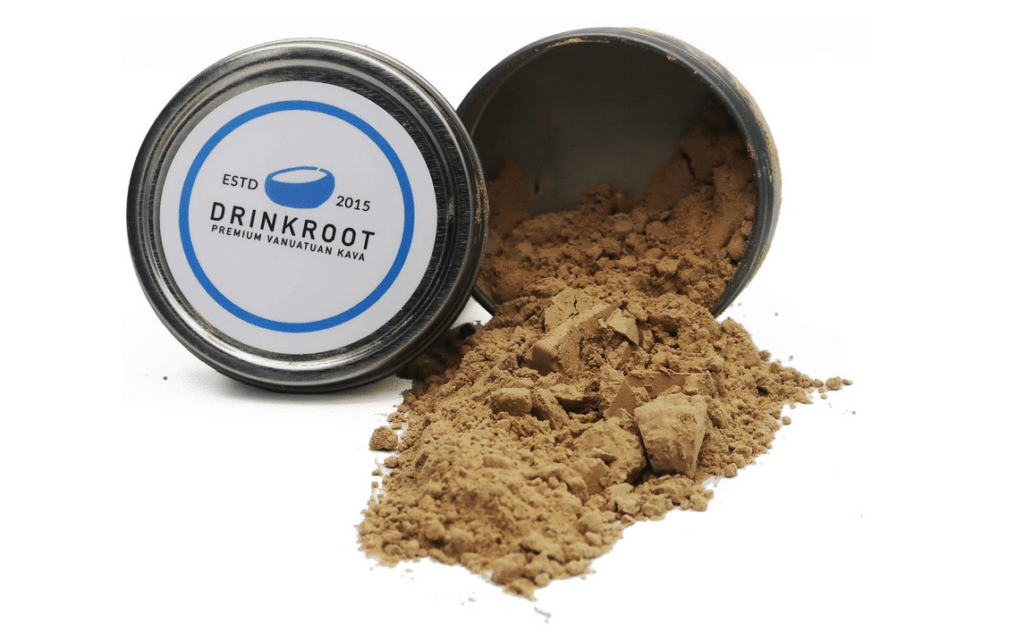
Drink Root is dehydrated kava juice– i.e. instant kava– made from a blend of noble kava strains. It has a high kavalactone content at 75 mg per gram of powder and is easy to use on the go.
Drink root is water-extracted lab-tested, and while it is a blend, it’s a single-origin blend, with all strains used coming from a small farm in Vanuatu.
Kona Kava
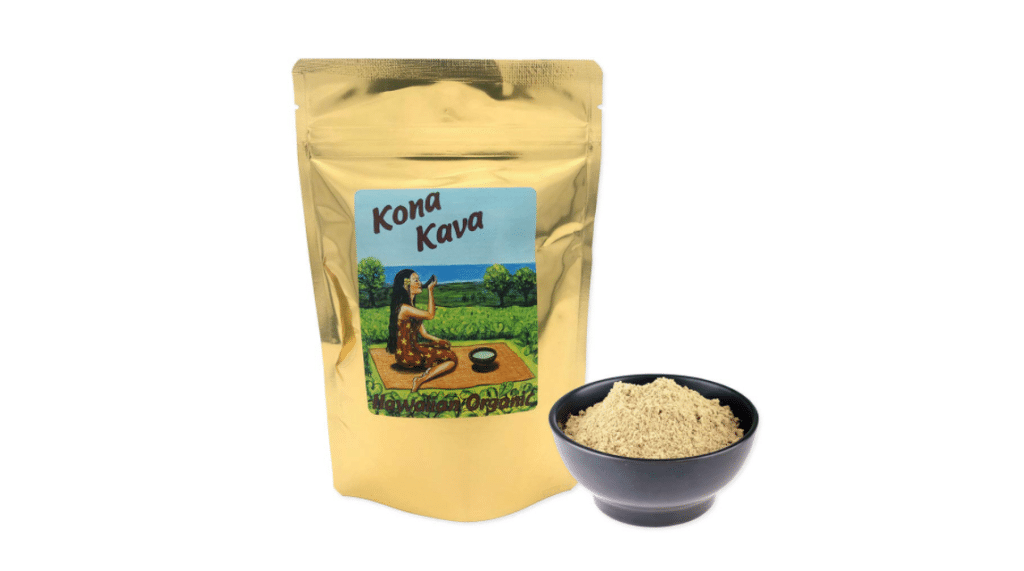
Kona Kava is micronized instant kava, again easy to drink on the go, and dosed a bit higher at 95 mg of kavalactones per serving. It comes in cocoa and banana/vanilla flavors. Both taste good on their own or with smoothies or protein shakes, and the cocoa flavor also mixes very well with coffee.
Kona’s manufacturing process does use ethanol, which is not ideal but their facility is GMP-compliant and they do thoroughly remove the ethanol after extraction.
Wakacon Kava
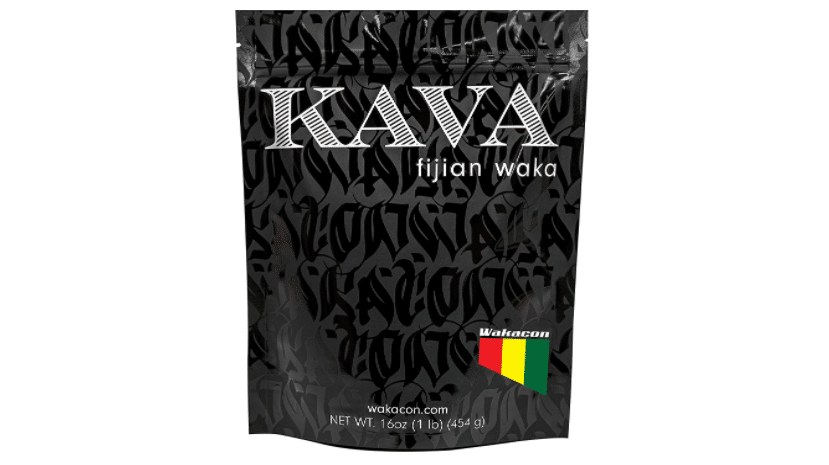
Wakacon is powdered kava root, not instant kava – thus, it has to be strained. That makes for a more authentic experience and avoids the issue of having partially-dissolved kava powder to deal with, but it is more work.
Wakacon uses only Fijian noble kava, and users report that their kava is generally quite strong, depending on how it’s brewed – a longer brew time will make for stronger kava. A kava brewing ball is helpful for getting the most out of it.
The recommended dose of 20 grams may be a lot for most people, and you may wish to start at half that. On the other hand, like coffee and tea, traditionally-ground kava can be used for 2-3 steepings, if you prefer.
Taki Mai
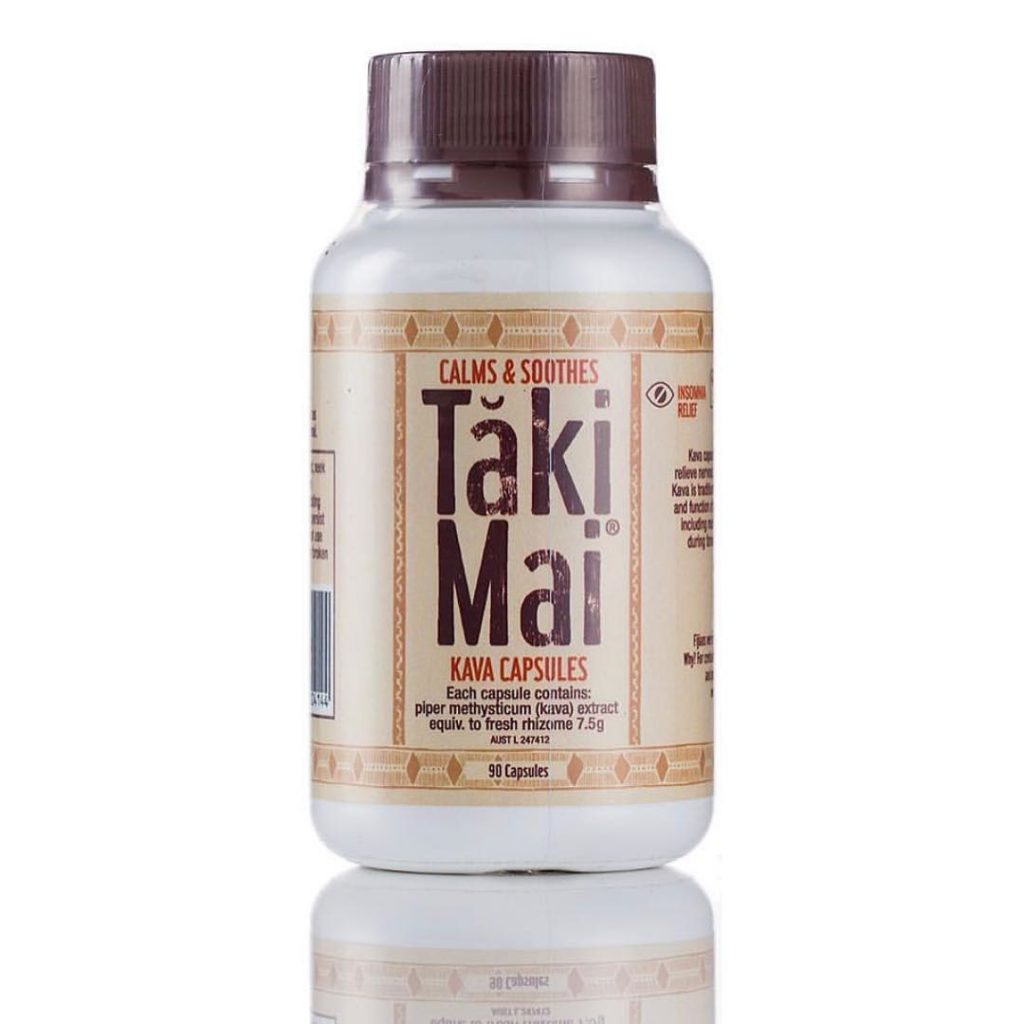
Another traditionally-ground Fijian noble kava powder, Taki Mai again requires a strainer or kava brewing ball to brew properly. It’s a bit smoother than Wakacon, and dosed a bit lower – it combines well with tea or coffee.
NOW Supplements
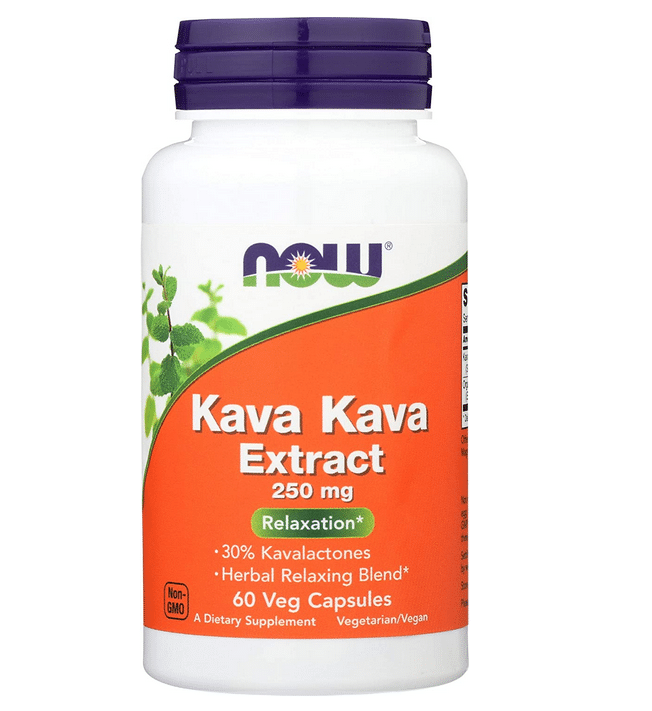
At 75 mg of kavalactones per capsule, NOW supplements kava kava extract capsules are ideal for traveling or dosing throughout the day in situations where brewing or mixing liquid kava would be too inconvenient.
Each capsule additionally contains 100 mg of eleuthero, a stress-fighting adaptogen. NOW kava pills are clearly optimized for use throughout the day as a stress fighter, and they excel at that purpose.
Kava FAQs
What is the difference between kava and kratom?
They’re not that similar at all really. Kratom can be more sedative or stimulatory, depending on the strain and dosage – red strains and higher dosage tend to be more sedative. Whereas kava is a pure sedative/anxiolytic, kratom is more of a mixed stimulant/anxiolytic, a bit like rhodiola rosea.
Our kratom strains chart explains the difference more thoroughly.
What is the best form of kava?
Noble kava is preferable to tudei kava, as it is easier on your liver and less prone to causing headaches. As far as origin, kava should come from one of the Polynesian islands where it is traditionally farmed since they have the climate for it, but no one island seems to be clearly superior.
How much kava should I drink?
You should start with 75 mg of kavalactones, which is usually around a gram of powdered kava extract. If using traditional ground kava, this equates to roughly 10 grams of kava powder, although that depends on the exact strain used and how long you brew it for.
What is the best way to drink kava?
Kava can be had cold or warm. In both cases, a traditional kava cup is made from a coconut shell. However, a ceramic mug or dish is also a nice way to have kava. You can even take a pottery class to make your own kava mug.
What does kava tea taste like?
Not great, honestly. It has an earthy taste and makes your mouth go a bit numb. You get used to it though, and it can combine well with coffee, tea, hot chocolate, or some fruity flavors.
How much kava is too much?
More than 250 mg of kavalactones is too much for all but the most experienced users – and if you need more than that, it may be time to take a break from kava anyway. That equates to 2-3 grams of kava extract powder or 20-30 grams of raw kava powder.
How old do you have to be to drink kava?
There is no age requirement in the United States or in most countries, but a few countries require kava drinkers to be 18.
How long do the effects of kava last?
At the recommended doses, kava’s more euphoric effects last 1-3 hours, while the anxiolytic and sedative effects can last up to 6 hours.
How does kava make you feel?
At lower doses, relaxed and slightly euphoric. At higher doses, it can be more sedating. Also, the euphoric effects tend to wear off earlier than the relaxing/sedating effects.
How long does it take for kava to kick in?
Typically within 20 minutes. However drinking it on a full stomach will make it take longer and give you a weaker effect spread out over a longer time, much like with alcohol.
Where can I buy kava?
Kava is available in a variety of herb stores and head shops, but it is mainly sold online. Buying online, and especially on Amazon, is often preferable for ease of comparison shopping.
Studies You Can Read About Kava
- Kava-kava extract WS 1490 versus placebo in anxiety disorders–a randomized placebo-controlled 25-week outpatient trial (Pharmacopsychiatry, 1997)
- Efficacy of kava-kava in the treatment of non-psychotic anxiety, following pretreatment with benzodiazepines (Psychopharmacology, 2001)
- The Kava Anxiety Depression Spectrum Study (KADSS): a randomized, placebo-controlled crossover trial using an aqueous extract of Piper methysticum (Psychopharmacology, 2009)
- Clinical efficacy of kava extract WS 1490 in sleep disturbances associated with anxiety disorders. Results of a multicenter, randomized, placebo-controlled, double-blind clinical trial (Journal of affective disorders, 2004)
- Kava and valerian in the treatment of stress-induced insomnia (Phytotherapy Research, 2001)
- Kavain analogues as potential analgesic agents (Pharmacological Reports, 2012)
- Piper methysticum (kava kava) (Alternative medicine review : a journal of clinical therapeutic, 3(6), 458–460, 1998)
- Kava as an anticraving agent: preliminary data (Pacific Health Dialog, 2001)
- Kava as a Clinical Nutrient: Promises and Challenges (Nutrients, 2020)
- Kava hepatotoxicity–a clinical review (Annals of hepatology, 2010)
- Kava dermopathy (Journal of the American Academy of Dermatology, 1994)
Make sure to read our article on the best kava.
Editor’s note: we are regularly updating this review. If you see any problems, weird interpretations of the data, or just want to say hi, please reach out to hello@the-unwinder.com.
Photo by Charlotte May from Pexels